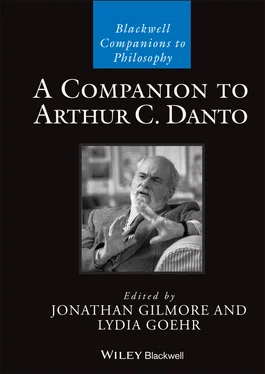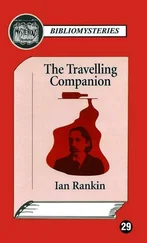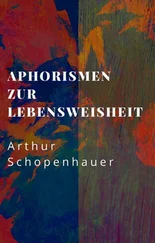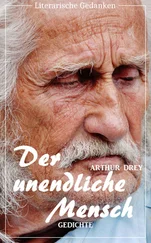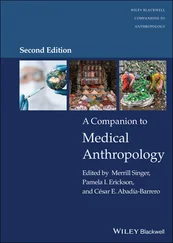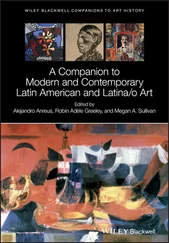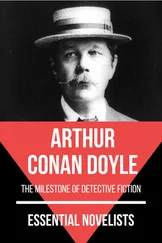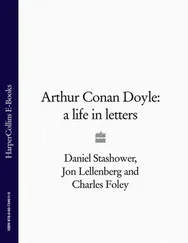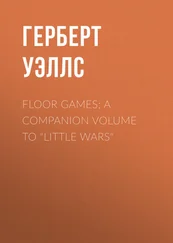A Companion to Arthur C. Danto
Здесь есть возможность читать онлайн «A Companion to Arthur C. Danto» — ознакомительный отрывок электронной книги совершенно бесплатно, а после прочтения отрывка купить полную версию. В некоторых случаях можно слушать аудио, скачать через торрент в формате fb2 и присутствует краткое содержание. Жанр: unrecognised, на английском языке. Описание произведения, (предисловие) а так же отзывы посетителей доступны на портале библиотеки ЛибКат.
- Название:A Companion to Arthur C. Danto
- Автор:
- Жанр:
- Год:неизвестен
- ISBN:нет данных
- Рейтинг книги:5 / 5. Голосов: 1
-
Избранное:Добавить в избранное
- Отзывы:
-
Ваша оценка:
- 100
- 1
- 2
- 3
- 4
- 5
A Companion to Arthur C. Danto: краткое содержание, описание и аннотация
Предлагаем к чтению аннотацию, описание, краткое содержание или предисловие (зависит от того, что написал сам автор книги «A Companion to Arthur C. Danto»). Если вы не нашли необходимую информацию о книге — напишите в комментариях, мы постараемся отыскать её.
Companion
A Companion to Arthur C. Danto
A Companion to Arthur C. Danto — читать онлайн ознакомительный отрывок
Ниже представлен текст книги, разбитый по страницам. Система сохранения места последней прочитанной страницы, позволяет с удобством читать онлайн бесплатно книгу «A Companion to Arthur C. Danto», без необходимости каждый раз заново искать на чём Вы остановились. Поставьте закладку, и сможете в любой момент перейти на страницу, на которой закончили чтение.
Интервал:
Закладка:
5 ––––. 1989 and 1997. Connections to the World: The Basic Concepts of Philosophy. Berkeley: University of California Press.
6 Dewey, John. 1988. “Experience and Nature” (1925) in Jo Ann Boydston, ed., The Later Works of John Dewey, vol. 1. Carbondale: Southern Illinois University Press.
7 ––––. 1989. “Context and Thought” (1931) in Jo Ann Boydston, ed., The Later Works of John Dewey, vol. 6. Carbondale: Southern Illinois University Press: 3–21.
8 Fesmire, Steven C., ed. 2019. The Oxford Handbook of Dewey. Oxford: Oxford University Press.
9 Haskins, Casey. 2019. “Dewey’s Art as Experience on the Landscape of Twenty-First Century Aesthetics.” In Fesmire, Steven C., ed., The Oxford Handbook of Dewey. Oxford: Oxford University Press: 445–70.
10 Rorty, Richard. 1992. “Philosophy in America Today.” In Consequences of Pragmatism, edited by Richard Rorty. Minneapolis: University of Minnesota Press: 211–30.
11 ––––. 2007. “Holism and Historicism.” In Philosophy as Cultural Politics, edited by Richard Rorty. Cambridge: Cambridge University Press: 176–83.
8 Thought Experiments: Art and Ethics
F.M. KAMM
In the first section of this chapter, I consider Arthur Danto’s use of a particular thought experiment to support his theory of art and Richard Wollheim’s discussion of it. In the second section, I consider a comparable thought experiment about conceptual issues in ethics. I then explore how ethics employs thought experiments to determine permissibility of acts and whether thought experiments could comparably be used to determine the merit of artworks. I finally consider Danto’s discussion of an ethical issue and how his discussion compares with Wollheim’s views about art.
1 Conceptual Issues about Art: Danto versus Wollheim
A. Among the contributions for which Danto is known is his “Gallery of Indiscernibles.” 1It includes a set of imagined red canvases that cannot be distinguished from one another on perceptual grounds. This, presumably, is not due to the limits of perception but because they are identical with respect to perceptual properties. However, they have different descriptions, which include (1) a painting of people drowning in the Red Sea, (2) a landscape of Red Square, (3) a minimalist painting (perhaps “Homage to the Red Square” by Josef Albers), (4) a canvas stretched and painted red by Giorgione that he never used for a painting, (5) a stretched red canvas that “an egalitarian” artist finds and submits as art and which is accepted as such. There are other indiscernible items described by Danto outside this red canvas set that could inspire more red canvases, such as (6) a canvas painted red by a child, and (7) the product of a puff of red paint “miraculously” (and accidentally) forming another indiscernible canvas.
These imagined red canvases involve at least two representational artworks (1 and 2). These two canvases have different subjects but cannot be distinguished physically; they could be perceptually mistaken for one another. There are also artworks that could be mistaken for things that are not artworks (e.g., 1 and 4). These thought experiments could be raised as counterexamples to the claim that (a) different artworks must be perceptually distinguishable, and (b) artworks can be distinguished from non-artworks by perceivable properties (introduced by artists). If these general claims were shown to be false by the counterexamples, there would be at least some artworks that are not artworks because of their perceptual properties alone. Assuming we could create comparable indiscernibles with other perceptual properties that other artworks have (e.g., fuzzy blue halos), if the thought experiments were successful counterexamples to (a) and (b), they would show that perceptual properties are never sufficient to distinguish between what is an artwork and what is not.
B. Richard Wollheim has counterargued 2that something like (a) and (b) could be “general truths” rather than necessary truths. The general truths, he thinks, are that “objects … made with the broad intention of being works of art will stand out from objects … not made with such an intention and works of art … made with different specific intentions will stand out from one another” (p. 35). So the fact that (5) could be accepted as an artwork does not function as a counterexample to a necessary condition on art, and that a certain assumption can be transgressed in a particular case does not show it could be universally transgressed. In addition, (i) Wollheim suggests that it might not be possible to accept (5) as a work of art if the general truths he describes did not hold (which seems to imply that it is necessary that certain truths hold at least generally) and (ii) he claims it is important that we would only “reluctantly” (p. 34) accept this atypical item as an artwork.
Consider Wollheim’s claim about reluctance. Once the barrier is breached and one atypical item is recognized as art, it may become increasingly easy to recognize other atypical entities as works of art. This shows that one might have to distinguish the particular content of general truths from the suggestion that atypical works of art depend on works of art generally having the properties they lack. If many once-atypical items get admitted to the “artworld,” it may no longer be true that the same general truths hold, and while the formerly general truths may have been necessary at one point for the then-atypical item to be art, they will no longer be necessary for other items to be art (since the others may be judged relative to the “new normal”). I will later return to Wollheim’s views to ask how they relate to possible positions in ethics.
2 Ethics and Indiscernibles
A. In this section, I consider how some thought experiments in moral philosophy do and do not resemble Danto’s gallery of indiscernibles. Danto was concerned with conceptual issues, for example, what is and is not an artwork. Perhaps the strictly comparable issue in ethics would distinguish between events subject to moral evaluation (part of the “moral world”) and perceptibly identical events that are not subject to moral evaluation (not part of the “moral world”). For example, an act (e.g., moving the hand in a particular way) might fall into the first class, while an identical bodily movement (e.g., due to a twitch) would fall into the second class. (However, acts taken to limit twitches would be part of the moral world.) This is what is called the issue of the scope of morality. Given that what distinguishes the act from the twitch is not a perceptible property, we know that there will be indiscernible events that do and do not belong in the scope of morality.
Within the realm of events subject to moral evaluation, there are, however, also conceptual issues related to indiscernibles. For example, there has been discussion of what behavior is a killing rather than a letting die. Some of these discussions make use of “galleries [Hospitals?] of indiscernibles,” comparable to Danto’s gallery for art. Here is a well-known case: Someone is attached to a life support machine. If the person’s doctor unplugs him, it is said by many to be a case of terminating treatment that constitutes a letting die. By contrast, if the person’s “greedy nephew” unplugs him, in a “perceptually indiscernible” way with perceptually indiscernible consequences (the uncle dies), it is said by many to be a killing.
Though it is imagined that the doctor and the nephew engage in the same exact movements, this is not necessary in order for the issue to arise of whether the two acts are of the same type (killing or letting die). This is because no one would take seriously the idea that, for example, a difference in the curve made by the doctor’s hand from the curve made by the nephew’s hand could be relevant to whether one act was a letting die and the other a killing. The same could be true of Danto’s examples. Suppose that each of his red canvases had a slightly different tiny dot in its right corner. The canvases would be discernible, but it would not be any easier to determine by perceptual means what was an artwork from what was not. However, once one decides (by reference to nonperceptual factors such as aboutness etc.) which canvases are artworks, the dots could help avoid confusing the artwork with the non-artwork.
Читать дальшеИнтервал:
Закладка:
Похожие книги на «A Companion to Arthur C. Danto»
Представляем Вашему вниманию похожие книги на «A Companion to Arthur C. Danto» списком для выбора. Мы отобрали схожую по названию и смыслу литературу в надежде предоставить читателям больше вариантов отыскать новые, интересные, ещё непрочитанные произведения.
Обсуждение, отзывы о книге «A Companion to Arthur C. Danto» и просто собственные мнения читателей. Оставьте ваши комментарии, напишите, что Вы думаете о произведении, его смысле или главных героях. Укажите что конкретно понравилось, а что нет, и почему Вы так считаете.
